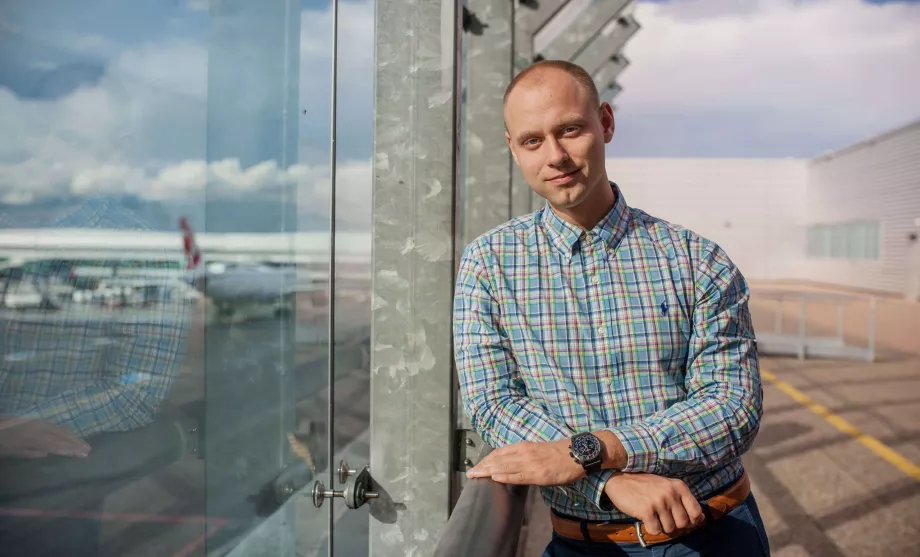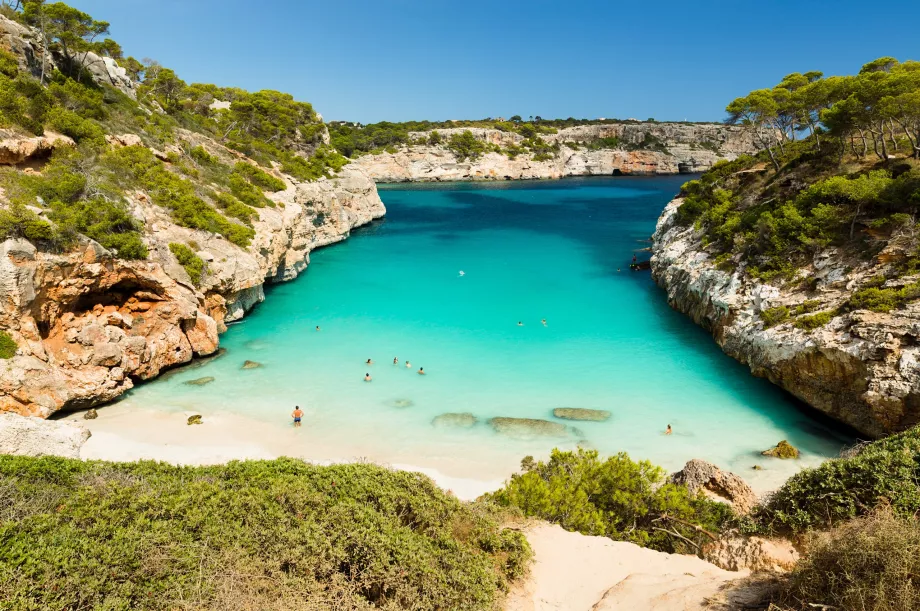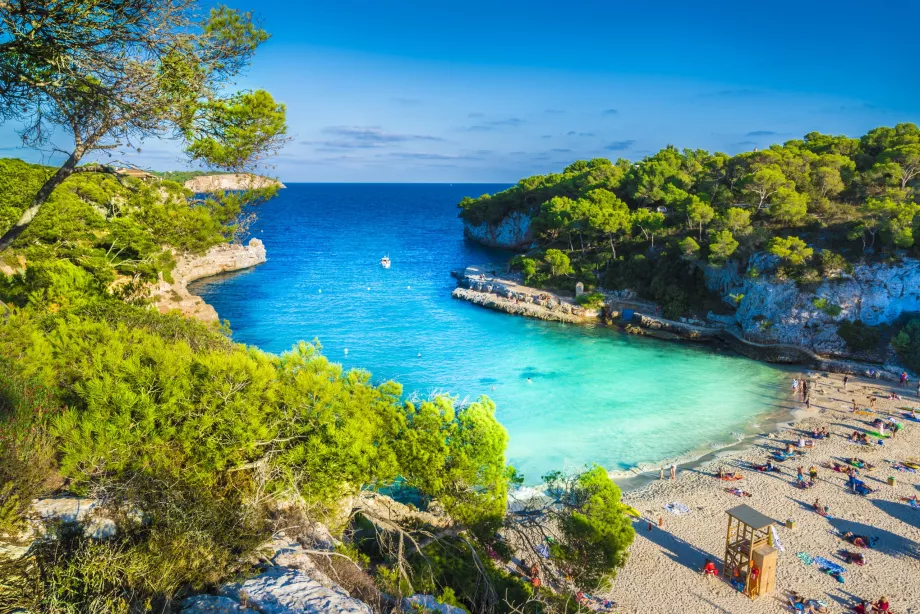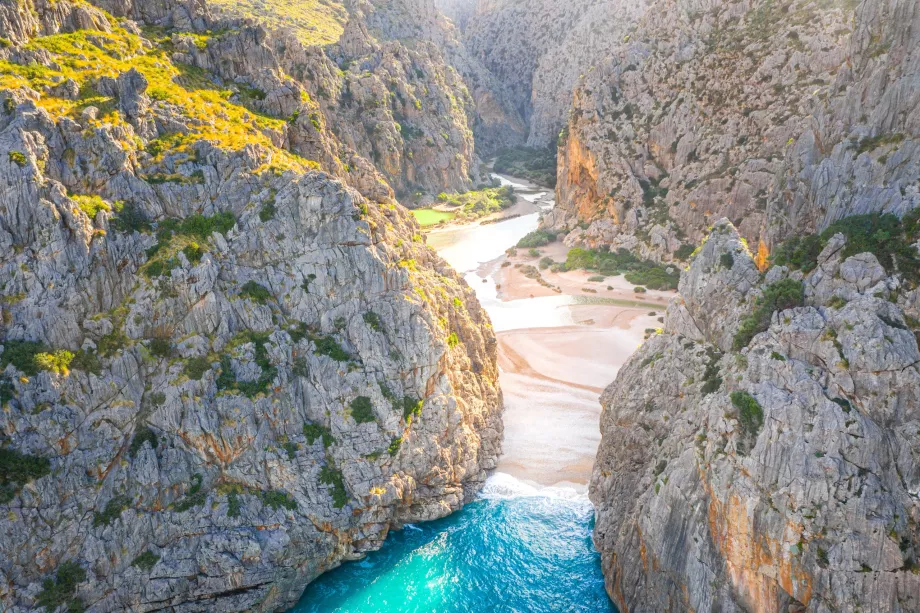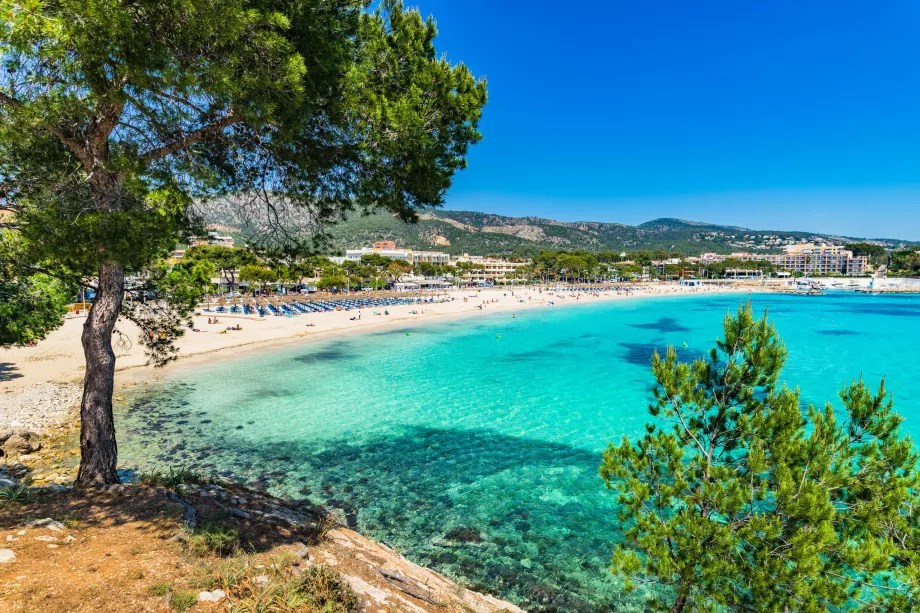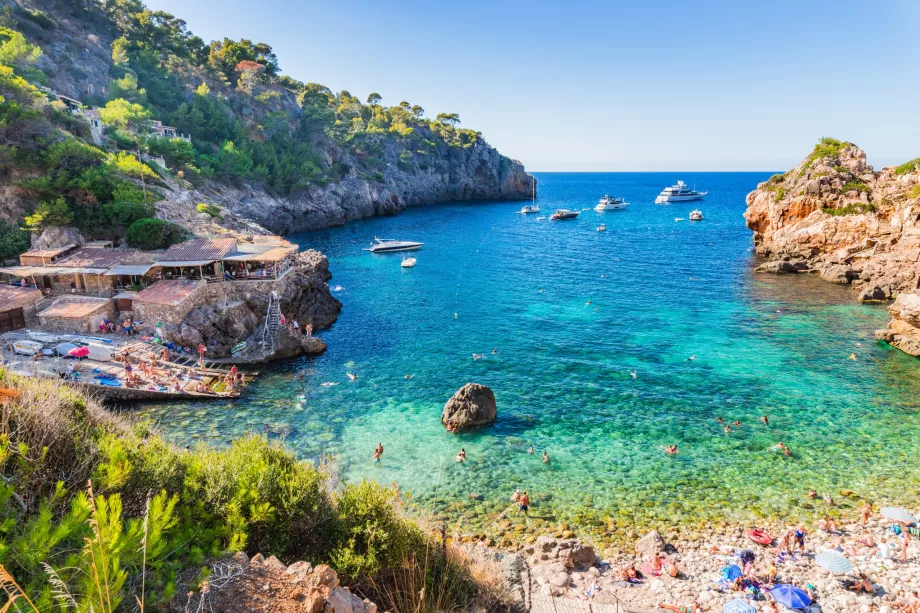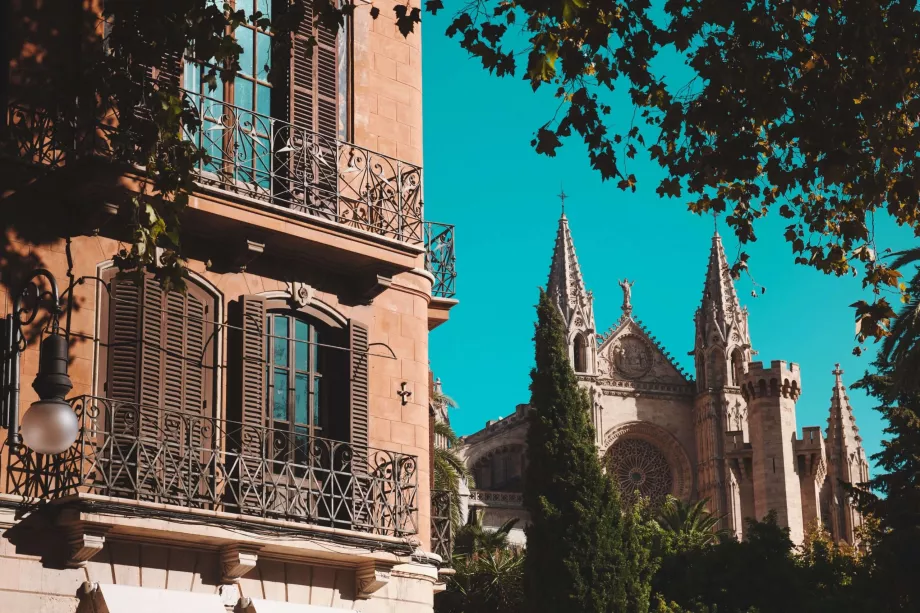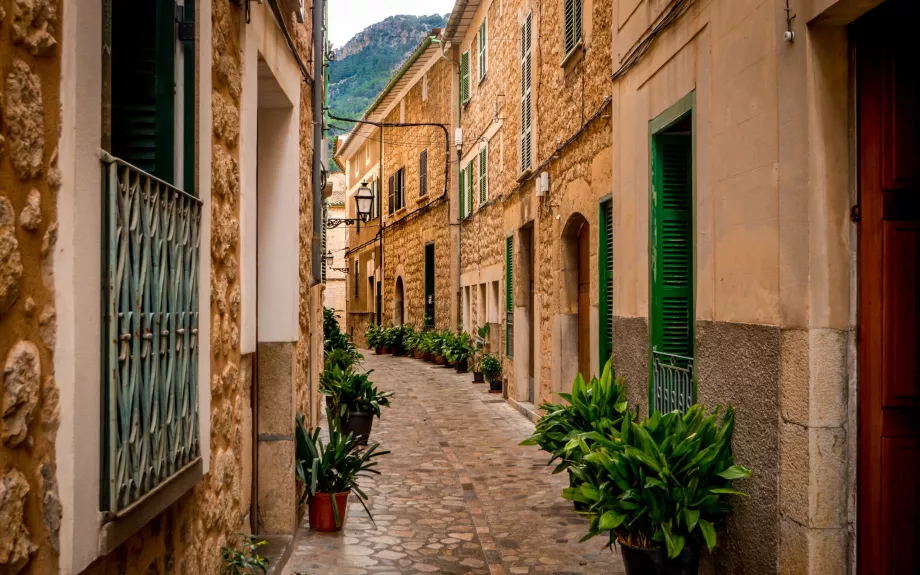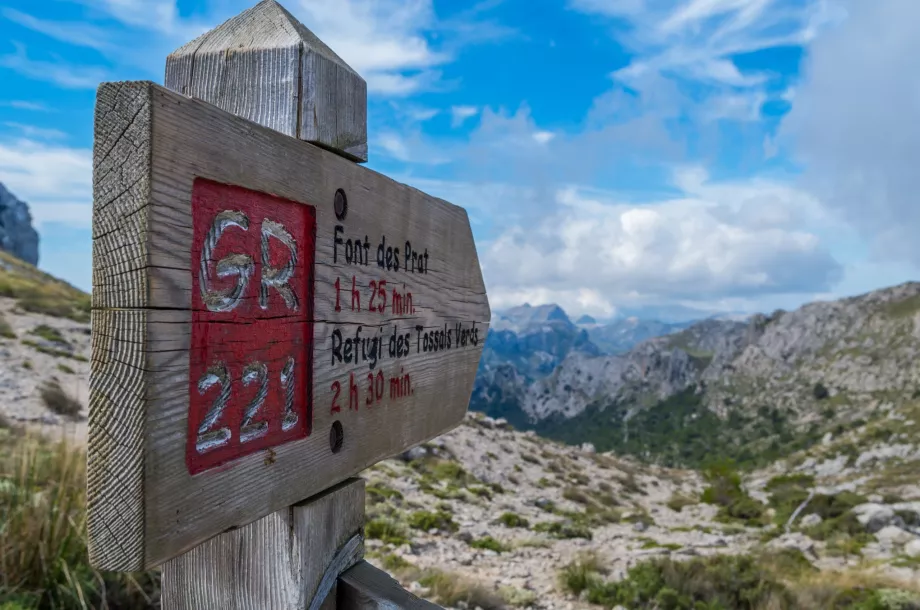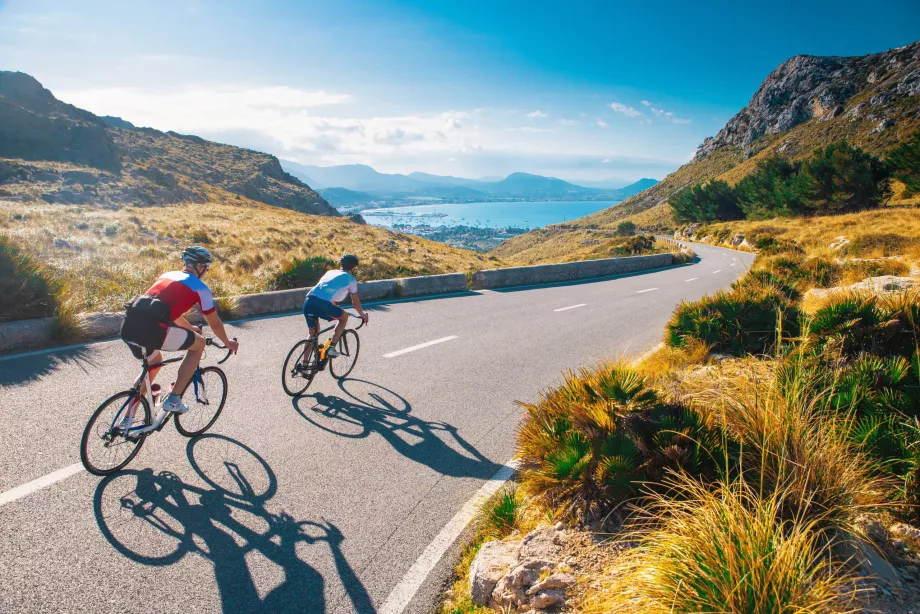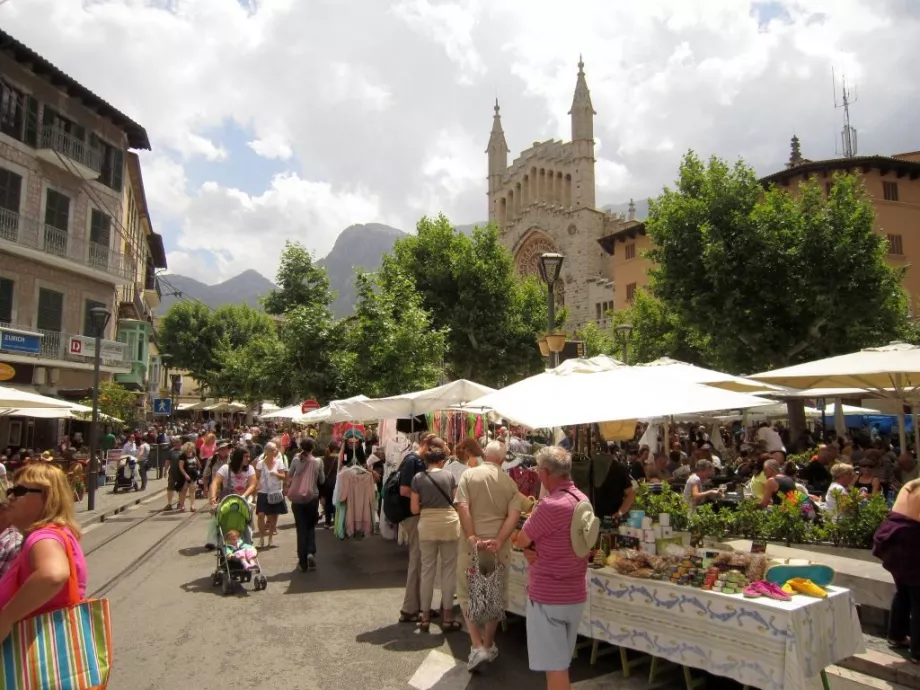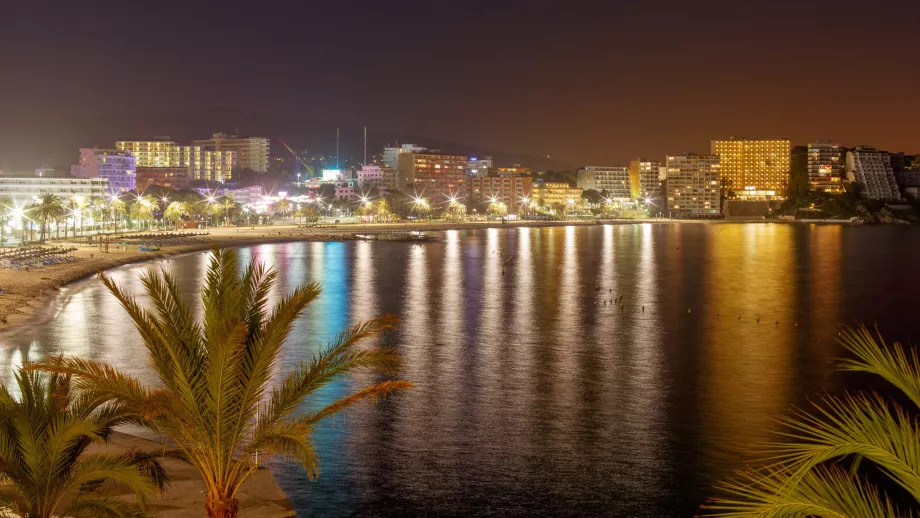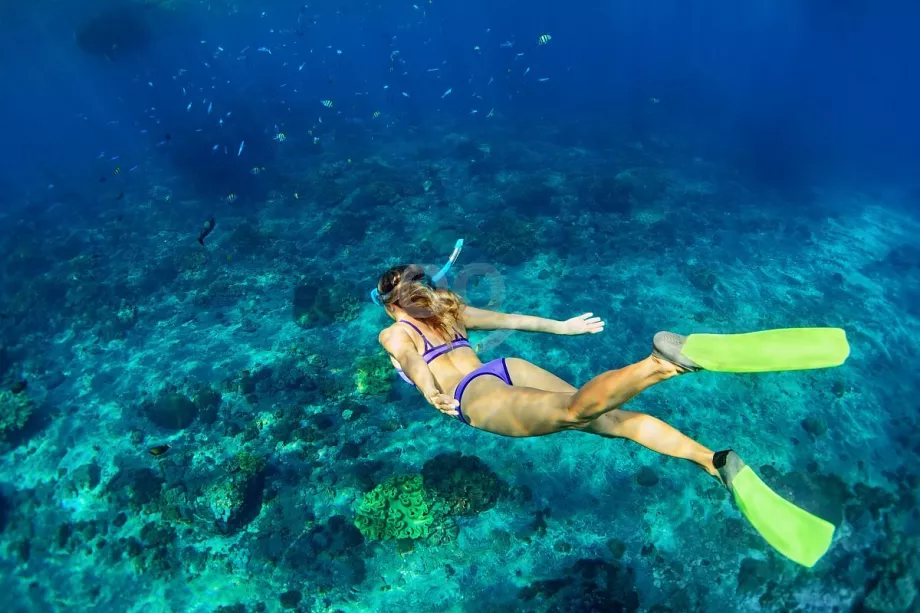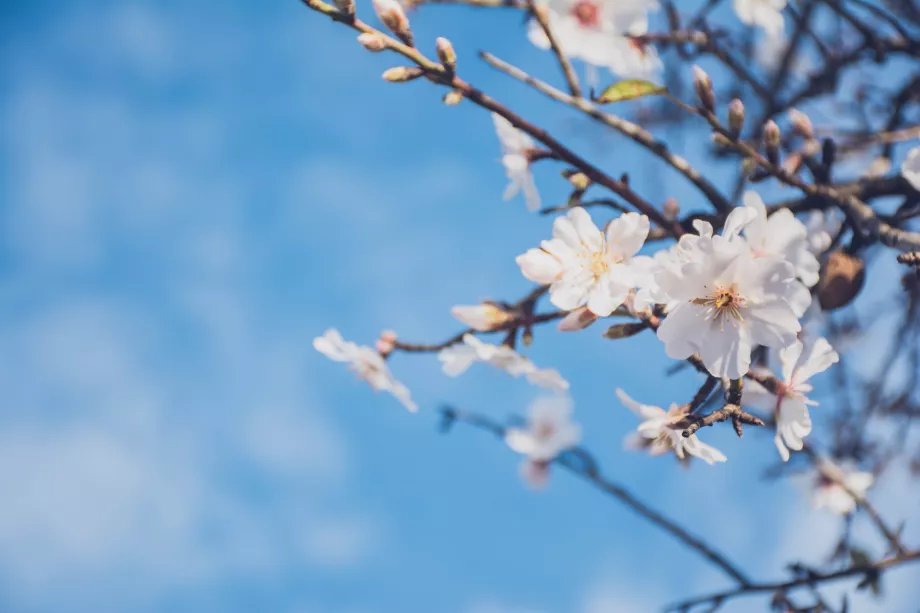What to do in Mallorca
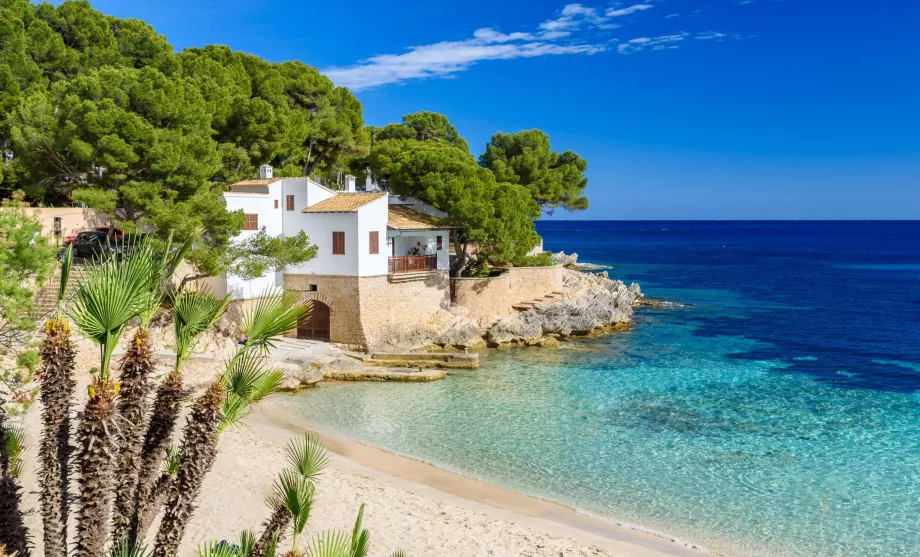
How to have fun on Mallorca? What activities are worth travelling to the Balearic island for?
Beaches and swimming
Whether you prefer long sandy beaches or smaller romantic coves, you'll find both in Mallorca. Mallorca's entire coastline is dotted with beaches, large and small, that will lure you in with crystalline seas and pleasant refreshment in the summer months. Unlike Croatia or Greece, for example, the vast majority of Mallorca's beaches boast fine white sand.
You'll rarely find pebble or rocky beaches here.
The 10 best resorts in Mallorca
Top 5 most beautiful beaches in Mallorca
But what are the most beautiful beaches in Mallorca and where to find them? Check out our selection of the top 5 beaches in Mallorca, just click on the name for details, information and a map:
But there are hundreds of other beautiful beaches in Mallorca that will delight both lovers of classic beach holidays with full facilities and enthusiasts of natural swimming away from civilisation.
Long and urban beaches
Do you want to enjoy a classic beach holiday on beautiful, well-maintained beaches with all the facilities or near larger towns? Then focus on specific areas of the island:
- South: here you can enjoy mainly urban beaches with plenty of space and all the necessary facilities. The most famous beaches are Magaluf, Palmanova and El Arenal. You can also head to the beaches of Illetes or Cala Major.
- Northeast: Here you'll find Mallorca's most sought-after beaches, including Muro, which stretches for more than 3km from Alcúdia to Can Picafort. The nearby resort of Port de Pollenca also offers a classic urban beach. The environment here is much quieter than around Palma, but still with all the facilities and entertainment.
- East: On the easternmost coast you'll find classic long sandy beaches, especially around Sa Coma and Cala Millor. The environment here is quiet, with plenty of entertainment on the beaches, but the resorts boast more hotel resorts than anything else. The perfect place for a quiet holiday in one place.
Natural and photogenic beaches
If you prefer smaller beaches in natural coves with breathtaking views of cliffs, mountains or sand dunes, you'll have plenty of choice in Mallorca.
- South: the southernmost tip of Mallorca is known for its beautiful bay beaches in the Santanay area, as well as long sandy beaches far from civilisation. Visit one of the most popular, yet natural, beaches here, Es Trenc, over 3km long. If you prefer smaller beaches in rocky coves, local gems include Es Calo des Moro, Cala S'Amarador or Cala Llombards.
- East: the coastline between Portopetro and Porto Cristo is dotted with dozens of small, deserted coves, some of which can only be reached after a few kilometres of walking. Mallorca's west coast is ideal for lovers of deserted beaches and small resorts.
- North: Although you won't find many beaches on the north and north-west coasts, you'll absolutely love the ones that do exist. These are always small patches of sand in dramatic and photogenic coves with high hills surrounding the coastline. Some of the most beautiful beaches here are Sa Calobra or Deia.
Prices of sunbeds and umbrellas
Even on the smallest beaches, umbrellas and sunbeds are available for hire in most cases. A set of two sun loungers and one parasol costs around 13 to 18 eur per day in Mallorca, depending on the location.
The beaches around Palma de Mallorca are more expensive, while the beaches on the west coast are slightly cheaper.
Water sports and activities
You'll find rentals for a variety of watersports on all the major beaches. Expect a limited range on the smaller beaches in the coves in the south and west of the island, where there isn't as much space.
The most popular water activities in Mallorca that are accessible to anyone include paddleboarding and then the classic water banana rides, jet-skiing or parasailing.
Examples of prices:
- Parasailing (parachuting behind a boat): 40 eur for 30 minutes
- Paddle board (one hour lesson): 35 eur
- Water banana ride: approx. 30 eur for 30 minutes
- Water skiing: approx. 45 eur for 30 minutes
History and sights
Mallorca has a rich history that goes back hundreds of years. The island may not be one of the places you go to mainly for the sights, but definitely a tour of the historical attractions will be the perfect addition to a Mallorca holiday.
Most of the sights can be found in the capital, Palma. Valldemossa, Deia, Alcudia, Sóller or Capdepera are also definitely worth a visit.
Hiking
As well as beaches and water activities, Mallorca is also a paradise for hiking. Mountains, breathtaking views of sea cliffs, canyons and gorges all make for an ideal combination for hiking. It's best to go in spring or early autumn when temperatures are pleasant for walking.
You can find all the interesting hiking trails and their descriptions in English on alltrails.com, for example, but you can also use maps.cz, where the marked hiking trails are all in red.
Route GR 221
The longest and best known route is the GR-221 (Ruta de la Pedra en Sec), which winds through the Tramuntana Mountains and is approximately 150 kilometres long. The total route is divided into 8 main sections and 9 different variations according to difficulty, and at the end of each section you will find a place to spend the night and then start hiking again in the morning. The route is very well marked with signposts, where the distances are always given in time values.
The GR-221 often runs along the coast with amazing views and also takes you to the highest points of the island.
Map of GR 221
Official tourist maps are not very common in Mallorca, but you can look at the GR 221 route map on many websites of interest, for example: wandermap.net, alltrails.com.
Individual sections with time requirements
1. Port d'Andratx - Sant Elm - La Trapa, 3 h 45'
2. La Trapa - Estellencs, 7 h 15'
3. Estellencs - Esporles, 5 h
4. Esporles - Deià (Refugi de Can Boi), 6 h 30'
5. Deià - Port de Sóller, 3 h 15'
6. Port de Sóller - Ref.de Tossals, 8 h
7. Ref. de Tossals Verds - Lluc, 6 h
8. Lluc - Pollença (Refugi del Pont Romà), 4 h 45'
GR 222
The GR-222 route from Artà to Lluc is 134 kilometres long, offers a total of 5 sections and takes you into the heart of the Tramuntana mountain range. The individual sections.
1. Artà - Sa Duaia - Cala Torta - Torre d'Albarca - Refugi de S'Arenalet des Verger (17.3 km)
2. S'Arenalet des Verger - S'Esquena Llarga - S'Alqueria Vella d'Avall - Ermita de Betlem - Betlem (14,1 km)
3. Betlem - Caloscans - Colònia de Sant Pere - Sa Canova - Son Serra de Marina - Son Serra- Montblanc - Santa Margalida (31,3 km)
4. Santa Margalida - Llubí - Inca (23,4 km)
5. Inca - Selva - Caimari - Lluc (15,2 km)
Fans will find here the first ever Nordic Walking Park in the Balearic Islands. It is located in Alcudia and offers a total of 3 levels of difficulty.
Cycling
It is no coincidence that some of the world's most famous cycling teams regularly choose Mallorca for their training sessions (spring and autumn). Here you will find more than 700 kilometres of cycling routes, 20% of which go through the mountains, offering several levels of difficulty for everyone to choose according to their ability. There are several bike rental companies on the island that can also provide full service, with prices starting from 50 EUR / day. For example Berganti bikes in Palma or Tramuntana Tours in Sóller.
For inspiration for cycling trips, check out the maps on komoot.com or cyclinglocations.com.
Golf
The golf season takes place in spring and autumn, when the sun is not so hot. You'll find several golf courses around the island, offering 9-18 holes and all equipment for hire. Just a short distance from the capital is the Arabella Golf Club, which has 3 golf courses under its umbrella, you can book online at: arabellagolfmallorca.com. Prices are around EUR 100 for 18 holes.
Slightly cheaper is the T-golf & country club, around EUR 80 for 18 holes, book online at: t-golf.club.
Book your car rental at PMI airport
Markets
Every major city offers markets at least once a week, where you can find everything you can think of. From local produce, fruits, fresh vegetables, pickled olives, to handicrafts. Here is an overview of each market:
- Monday: Calvià, Lloret de Vistalegre, Manacor, Caimari, Montuïri.
- Tuesday: Alcúdia, Artà, Campanet, Porreres and Santa Margalida.
- Wednesday: Andratx, Capdepera, Felanitx, Deià, Petra, Port de Pollença, Santanyí, Selva, Sencelles, Sineu, Vilafranca de Bonany and Colònia de Sant Jordi.
- Thursday: Ariany, Campos, s'Arenal, Consell, Inca, Pòrtol, Sant Llorenç de Cardàssar, Ses Salines, Sant Joan, Lloseta.
- Friday: Alaro, Algaida, Binissalem, Can Picafort, Llucmajor, Maria de la Salut, Pont d'Inca, Son Servera and Sa Cabaneta.
- Saturday: Búger, Bunyola, Cala Rajada, Campos, Costitx, Esporles (first Saturday of the month), Palma, Santanyí, Sóller, Santa Eugènia and Santa Margalida.
- Sunday: Alcúdia, Consell (flea market), Felanitx, Llucmajor, Muro, Pollença, Porto Cristo, Santa Maria del Camí, Valldemossa and Sa Pobla.
Holidays and celebrations
Spaniards love all kinds of celebrations, called fiestas. Every month you can find a place where a fiesta is taking place, here are the most famous ones:
- January: Sant Sebastia - the highlight of these celebrations takes place on 19 January in Palma, when a parade with a giant dragon (correfoc) goes through the city, spouting fire and under which brave Spaniards dance for good luck. Fire is omnipresent on this night, as are devils in scary masks and the deafening sounds of chains and haunting music. If you want to attend this festival, we recommend wearing long-sleeved cotton clothing and not getting too close to the fireworks and bonfires.
- February
- Sa Rua - a carnival whose parade goes through Palma on February 23.
- Fira de la Flor d'Ametler - a celebration of the almond blossoms is held in the first week of February in the village of Son Servera. Here you can buy and taste a variety of products made from local almonds, which are said to be the best in the world thanks to the favourable climate.
- March: Balearic Islands Days - 1 March in Palma. Celebration of the Balearic Islands, markets with local products.
- April: Semana Santa, or Holy Week of Easter, when fraternity parades go through the town.
- May: Battle of Moros y Cristianos - Port de Soller and simulation of the famous battle of 1561 when the Christians won. Locals put on costumes and party all day, with lots of good food on offer, music playing and dancing on the beach. You probably won't get away without your face painted.
- June. Around midnight, everyone jumps into the sea to make a wish and welcome summer.
- July
- Fiesta de Flexas - the specific day changes every year, celebrated in Palma. Artists, perfomers and DJs from all over the island will entertain you all night long. This whole big party is organised by the people of Flexas bar in the centre of Palma and has gained fame all over Mallorca.
- Artdemossa - a festival in Valldemossa where cultural heritage is celebrated. The festival itself is divided into 4 parts - sculptures, photography, music and food. The exact programme is always specified a few weeks before the festival itself, you can follow the information here: www.ajvalldemossa.net.
- August: the Pilgrims' Night - starting from Palma and going to Llucu, which is about 50 km away, the journey takes about 11 hours and is attended by tens of thousands of people from all over Mallorca every year. If you're not fit enough to walk the whole way, don't despair, there are bus stops along the way to take you back to Palma.
- September: Festa des Vermar - for 2 weeks the town of Binissalem hosts these celebrations. Colourful decorations, women in typical costumes, treading grapes or throwing grapes at people. Wine tastings are commonplace, but this festival is held to celebrate the end of the grape harvest.
- October: Colcada de la Beata - 19 October in Palma. A parade goes through the town to the Church of St. Magdalena, and throughout the day you can take part in a celebration full of music, costumes and good food.
October is generally a month when food and wine are celebrated all over the island. If you want to taste the typical sausages, then visit the Fira de matançes in Campos on 22-24 October.
- November: the Fira de s'Oliva - 16-17 November in Caimari, a celebration of olives, when you can get an up-close look at their processing and sample all sorts of olive dishes at the stalls.
On 17 November, there is also the Llubí Honey Festival, where you can find different types of homemade honey and products made from it.
- December:
- Fira de la llet d'ametlla - 14 December in Marratxí, the traditional almond milk festival. Almonds and almond dishes are deeply rooted in Mallorcan cuisine and this is where you can sample them.
- Festa de l'Estandard - 31 December in Palma. This is the oldest celebration, dating back to the 13th century, to commemorate the arrival of King Jaume I's soldiers and the liberation from Moorish rule. Every year at 10:15 am the royal standard is raised in Plaza Cort, followed by a mass in the cathedral and a parade with music and costumes.
Waterparks
When beachside fun by the sea isn't enough for the kids, take advantage of the abundant facilities Mallorca has to offer. Practically every major resort has a waterpark with slides and various water attractions. Entry prices range on average from 23 to 30 eur depending on the size of the waterpark. Discounts on tickets are often available when purchased online through the website of the specific waterpark. See a list of waterparks in Mallorca, including links to the official websites:
- Aqualand in El Arenal
- Western Water Park in Magaluf
- Hydropark in Alcudia
- BH Waterpark (Magaluf)
Nightlife
Mallorca is known not only for its beautiful beaches, but also for its rich nightlife. In every major resort you will find bars and discos, the most famous ones are definitely located in the capital and then in Magaluf (mostly British clientele) and Arenal (mostly German clientele).
In Palma you will find the most famous clubs on the promenade by the harbour (Tito's, Social). There is usually an entrance fee to the club, which then includes 1 welcome drink (approx. 10 EUR). Beer costs approx. 2,5 EUR, wine 2,5 EUR, cocktails around 10 EUR.
The streets only come alive around midnight, not before. Clubs then close at around 6am or later.
Snorkeling and diving
Mallorca's rocky coves and reef coastline make for very good snorkelling and, for the more adventurous, diving. Of course, the diversity of marine life is not on a par with sites in Indonesia or the Caribbean, but it is among the most diverse in Europe.
Snorkelling
The best snorkelling spots are in the narrow and small bays in the south (Cala Llombards, Cala Pi and others), west (Cales de Mallorca) or north (Cala Barques or Sa Calobra). Snorkelling equipment can be bought up to 15 eur in any of the larger resorts, and half-day snorkelling boat trips can usually be purchased, stopping at several locations. Prices range between 50 and 65 eur.
Diving
You'll find the best dive sites mainly along the south coast of the island in the coves, off the smaller island of Cabrera, where boat trips are organised, and also in the west around the resort of Sant Elm. On the south coast around Palma de Mallorca you will find spots with underwater shipwrecks.
Prices for a test dive for beginners are around 70 eur (or 120 eur for a boat dive), while a scuba diving course for beginners costs around 300 eur including equipment hire. See the example of dive agencies:
Almond trees in bloom
Every winter, parts of Mallorca are transformed into a blooming almond orchard. The flowering almond trees of Mallorca attract travellers from many countries, when the fields of the orchards turn white or soft pink depending on the type of almond tree.
The largest concentration of almond trees is on the western side of the island between the towns of Palma de Mallorca and Port d'Andratax. You won't go wrong on the road north of Palma towards Valldemossa and Sóller. On the south-eastern plains of the island, the most almond trees are found around Llucmajor and Colonia Sant Jordi.
And when do the almond trees bloom in Mallorca? Some species start flowering in the second half of January and flower in late February/March. The best chance of seeing flowering almond trees is during February.
Local cuisine
The staple ingredients in Mallorca are pork, seafood, vegetables and olives. In addition to the classic tapas (or small snacks to go with wine or beer), there are many other delicacies. Many people mistake paella for the national dish, but it originates from Valencia. In Mallorca, it's more of a one-pot meal.
The most famous soup is sopa mallorquines, which is not a classic soup as we know it here, but a thick village dish of cabbage, meat and thin slices of bread. Next, try the frito mallorquino, a dish consisting of fried tripe, vegetables and potatoes. For vegetarians, tumbet, or roasted vegetables, is suitable.
In each restaurant you will also find pa amb oli - homemade bread drizzled with olive oil, tomato juice and garnished as desired (ham, cheese, salmon, ...). For dessert, try the national dish ensaimada, a twisted yeast dough cake topped with icing sugar (sometimes filled with custard or raisins), or coca de patatas, a yeasted potato doughnut topped with icing sugar.
Classic Spanish restaurants, which may not look very appealing at first glance, and which offer home-cooked cuisine, tend to be much cheaper than tourist restaurants. Starters here cost around 5 EUR, whereas in touristy places or restaurants with a sea view around 10 EUR, main dishes are usually around 18 EUR (seafood more), desserts again around 10 EUR. A glass of wine or beer costs around 2.5 EUR, soft drinks around 2 EUR, and they often drink coffee with whipped milk (café con leche), which costs around 2 EUR.
Any questions left?
If you have any questions or comments about the article...
